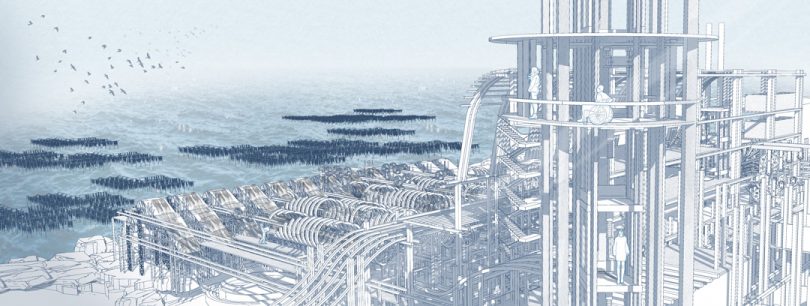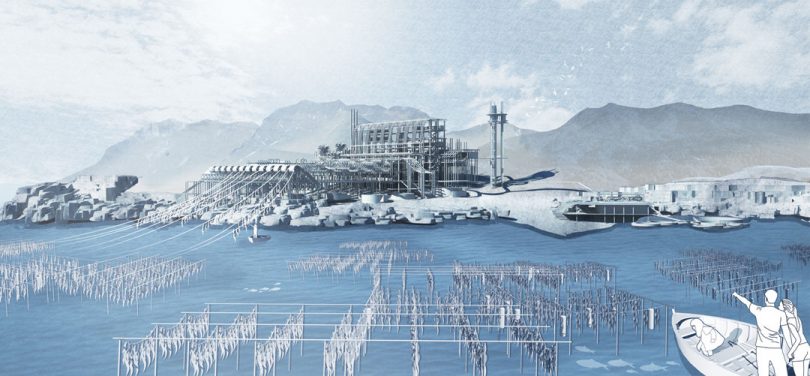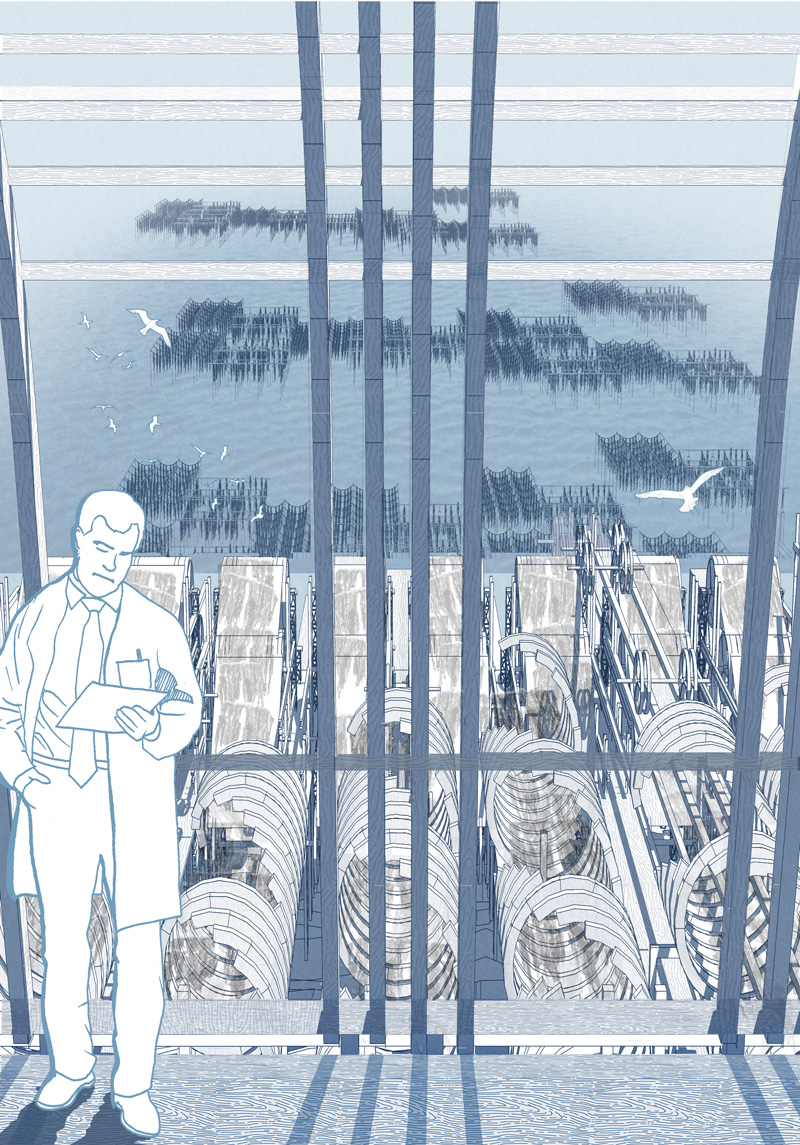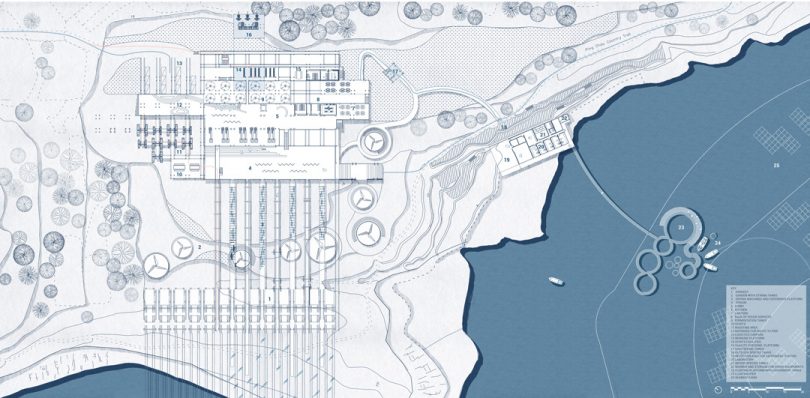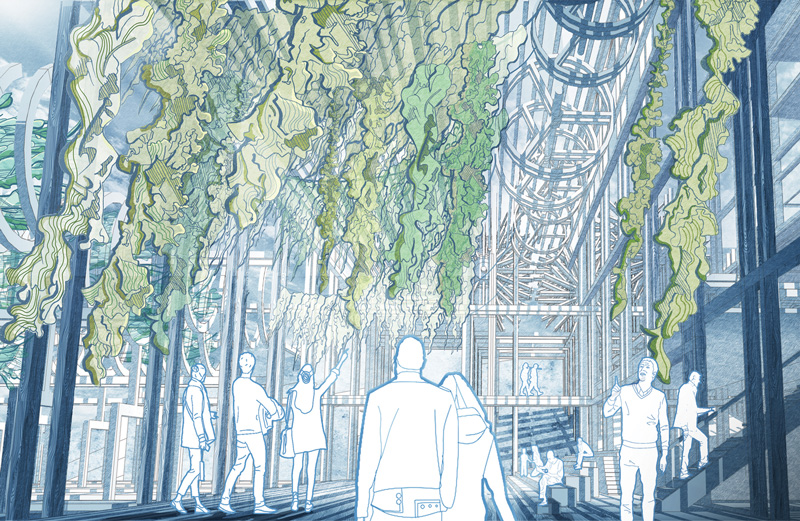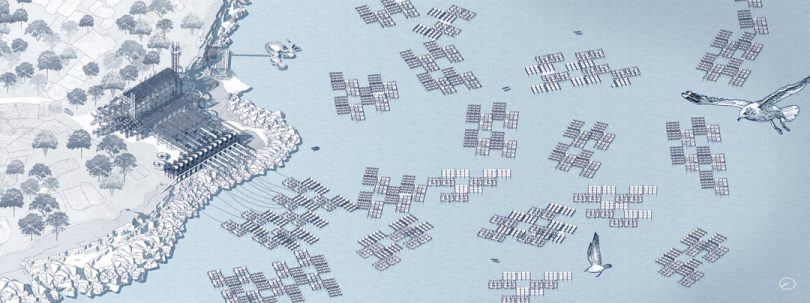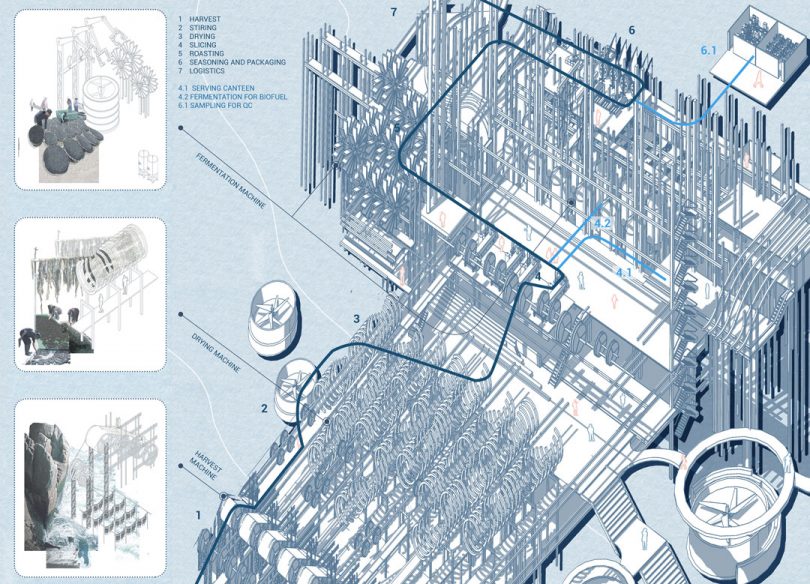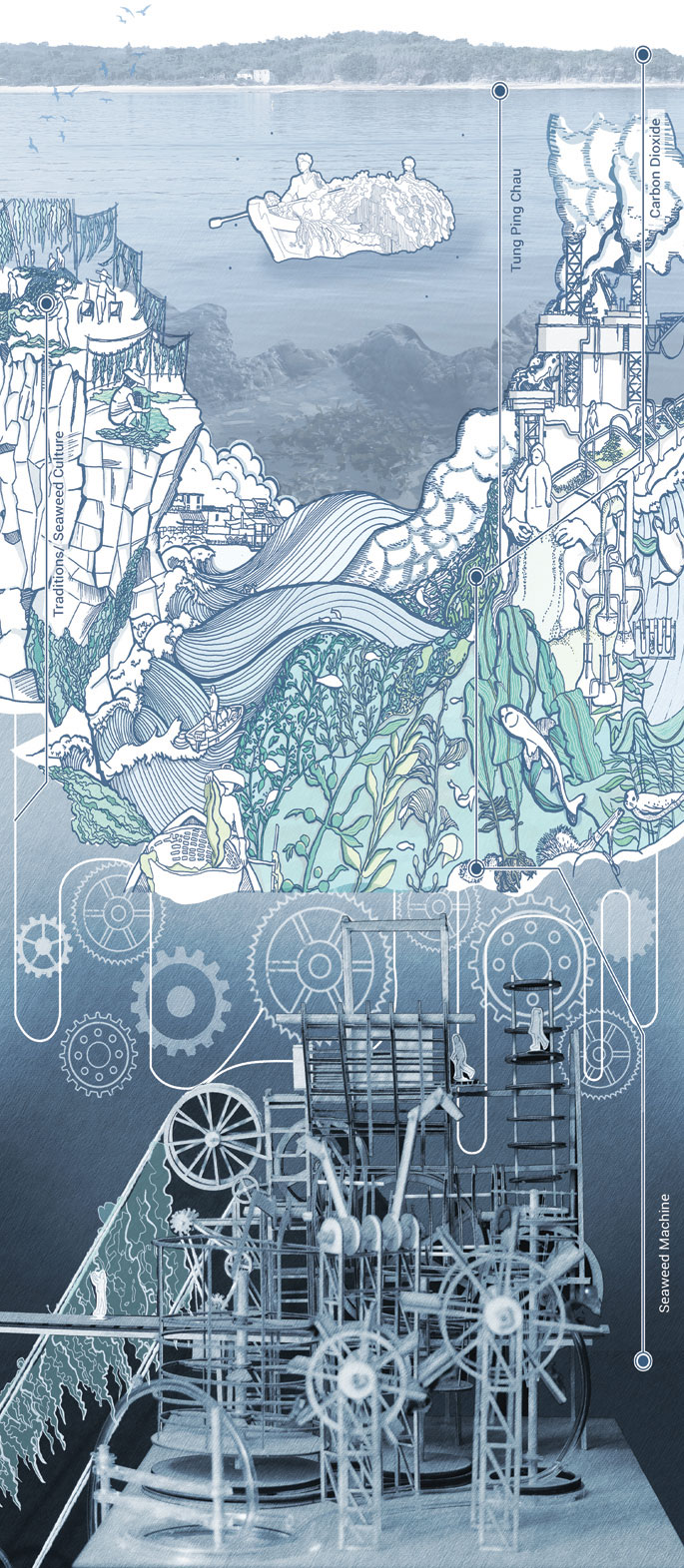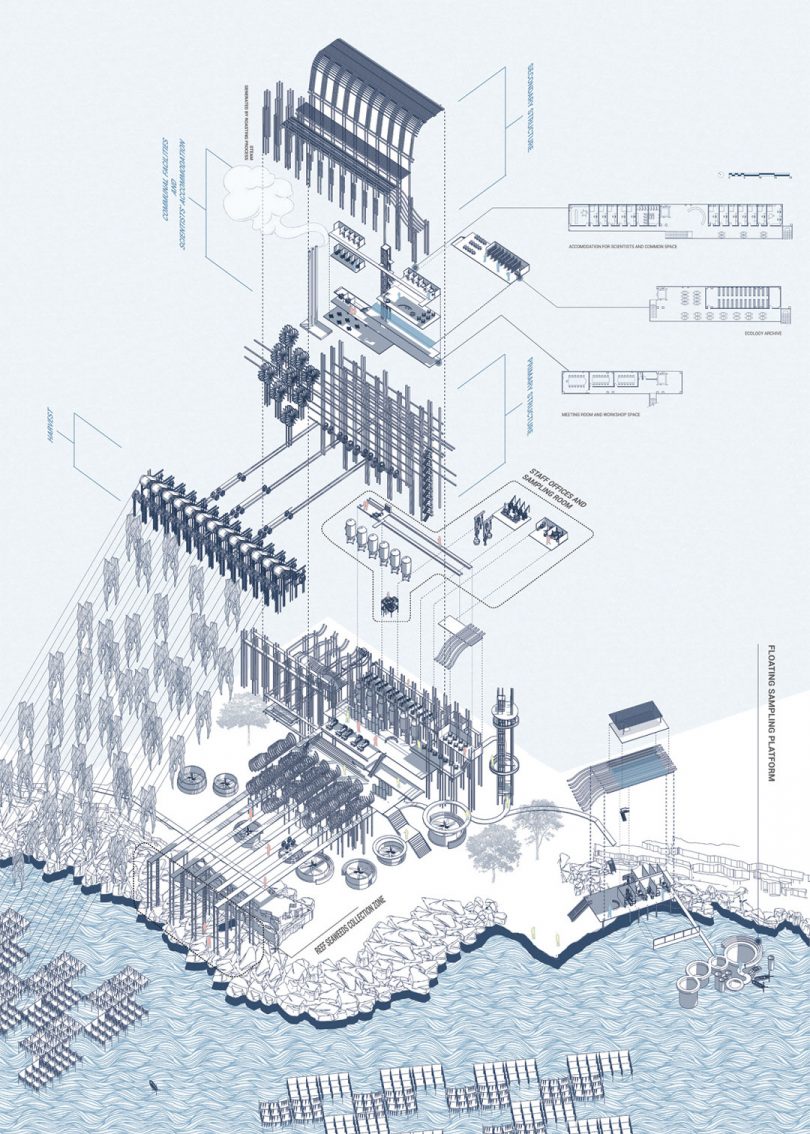Buildings have long been considered one of the major sources in carbon dioxide (CO2) production and architects who design and construct buildings are undoubtedly responsible for their part in the climate change issue. It is time for architects to take another step forward in addressing the issue through creating architecture that can absorb carbon dioxide into products that benefit humans. Therefore, regenerative architecture could be introduced as a new design paradigm in addressing the problem given its ability to generate energy and re-connect society with the natural architectural thinking.
The Seaweed Machine thesis project covers a preliminary master planning of Tung Ping Chau and the core of the design falls on the seaweed processing factory and marine science laboratory. Echoing with the research and acting as a statement towards the thesis questions, the architecture of the seaweed factory is a designed mechanism resembling the ecological system of seaweeds
NATURE-INSPIRED REGENERATIVE MECHANISM
The Seaweed Machine project takes the role of seaweeds as the foundational element to explore regenerative architecture. Seaweed could intake huge amount of carbon dioxide, around five times land plants do and they transform the dissolved the substance into carbohydrates through photosynthesis. In addition, it also enriches the ocean biodiversity as a protective shelter and acts as a bio-filter enhancing the water quality. The qualities of the living seaweeds would be incorporated in the design to study the feasibility of an architectural prototype with the integration of bio-inspired regenerative mechanism.
CLOSE-LOOP SYSTEM CONNECTING ECOLOGY, CULTURE AND COMMUNITY
One of the major strategies of regenerative design would be ‘design form to manifest process’. Apart from the mentioned multiple qualities of seaweed in ecological aspect, opportunities could be discovered from the perspectives of culture and socio-economic history.
In the past, Hong Kong fishermen would harvest seaweed with self-crafted equipment and villages relied on seaweeds as major source of economy. Not only did seaweed act as an indispensable role of aquaculture in Hong Kong, but it also represented part of the island history and culture.
In the meantime, a variety of products are generated from seaweeds, ranging from fabrics, super food to bio fuel. These could be considered the ‘by-products’ of the closed-loop system serving the local community.
AN ARCHITECTURAL MECHANISM BEYOND ORDINARY BUILDING PRINCIPLES
Regenerative design is valued for its benefits to energy and ecology. Great opportunities of incorporating biomimicry systems into the existing design framework can be envisioned. Throughout the thesis project, non-traditional stakeholders including marine scientists and villagers were also considered to develop a matured mechanism and form a space to facilitate the system processes. The project would focus on demonstrating a cyclical process through seaweeds and relationships between programmes beyond the scale of building and the ordinary building principles.
 Read the complete article on Construction+ App!
Read the complete article on Construction+ App!
Register now!
PROJECT DATA
Project Title
Seaweed Machine: Regenerative Architecture at Tung Ping Chau
Location
Tung Ping Chau, Hong Kong
Site Area
30,000 metres square
Gross Floor Area
25,000 metres square
Building Height
43 metres
Student Name
Wong Lok Hei, Jessie
School
Chinese University of Hong Kong
Programme
Master of Architecture
Supervisor
Prof. Thomas Chung
Images
Wong Lok Hei, Jessie

 Malaysia
Malaysia Singapore
Singapore Indonesia
Indonesia Tiếng Việt
Tiếng Việt ประเทศไทย
ประเทศไทย


